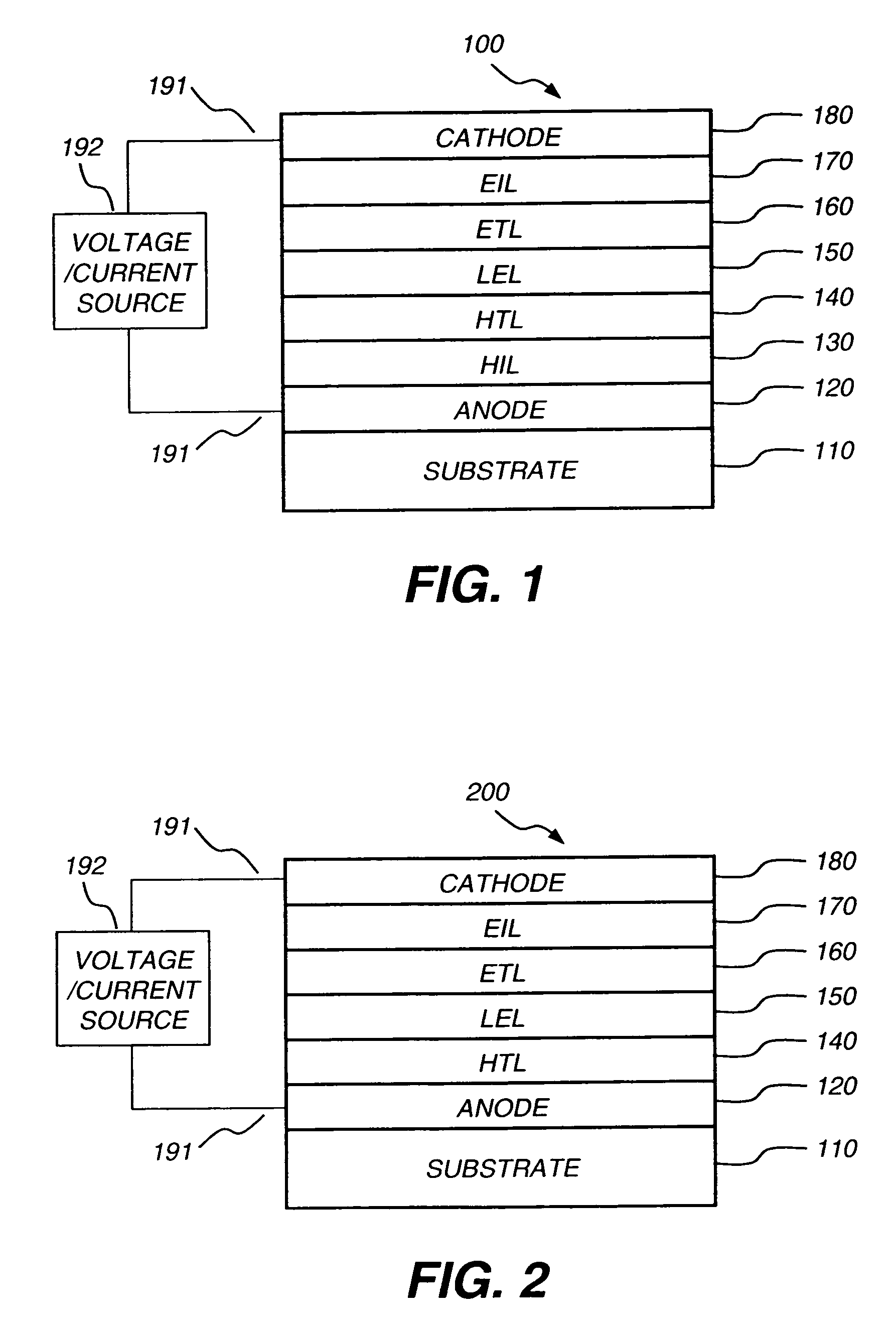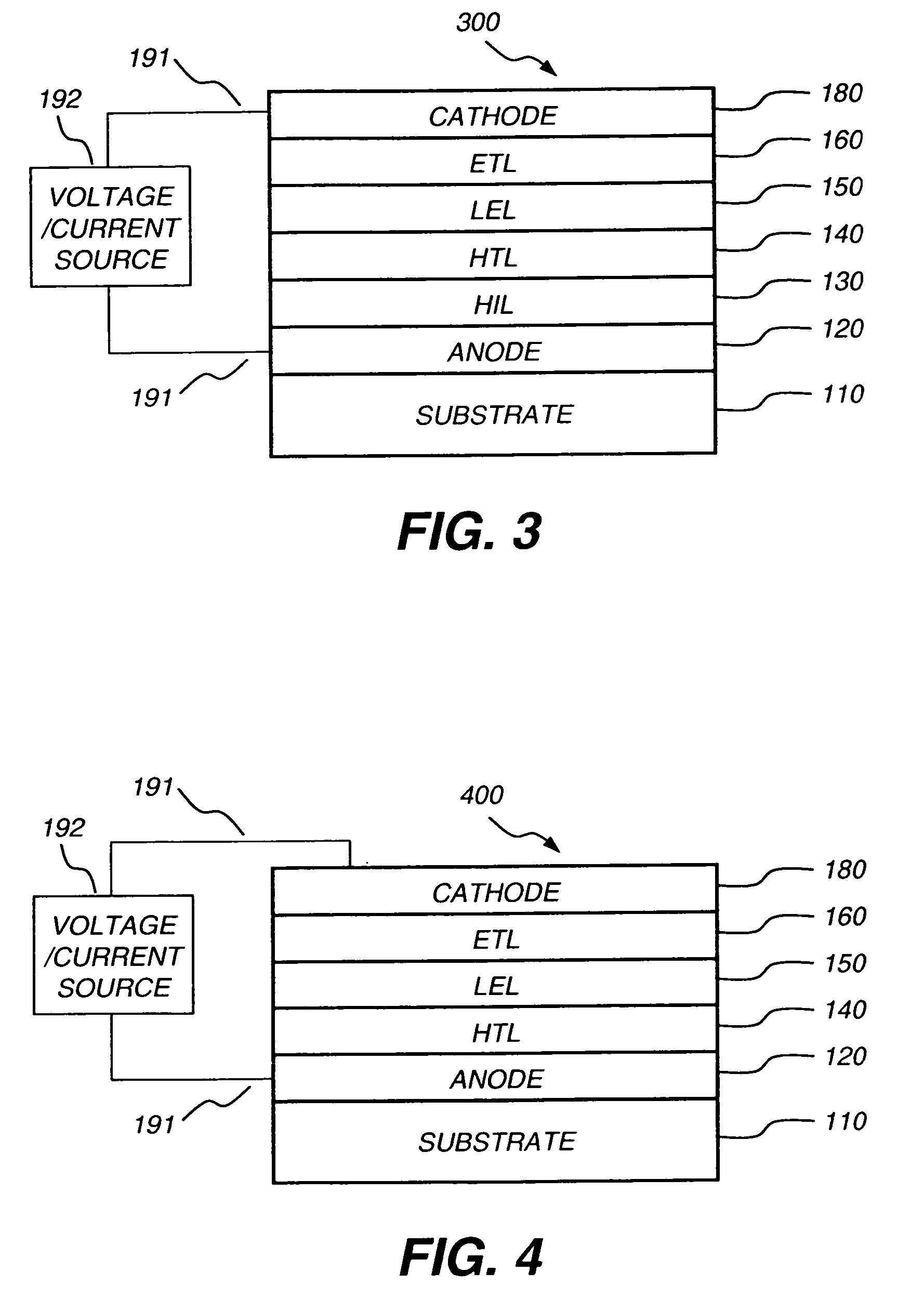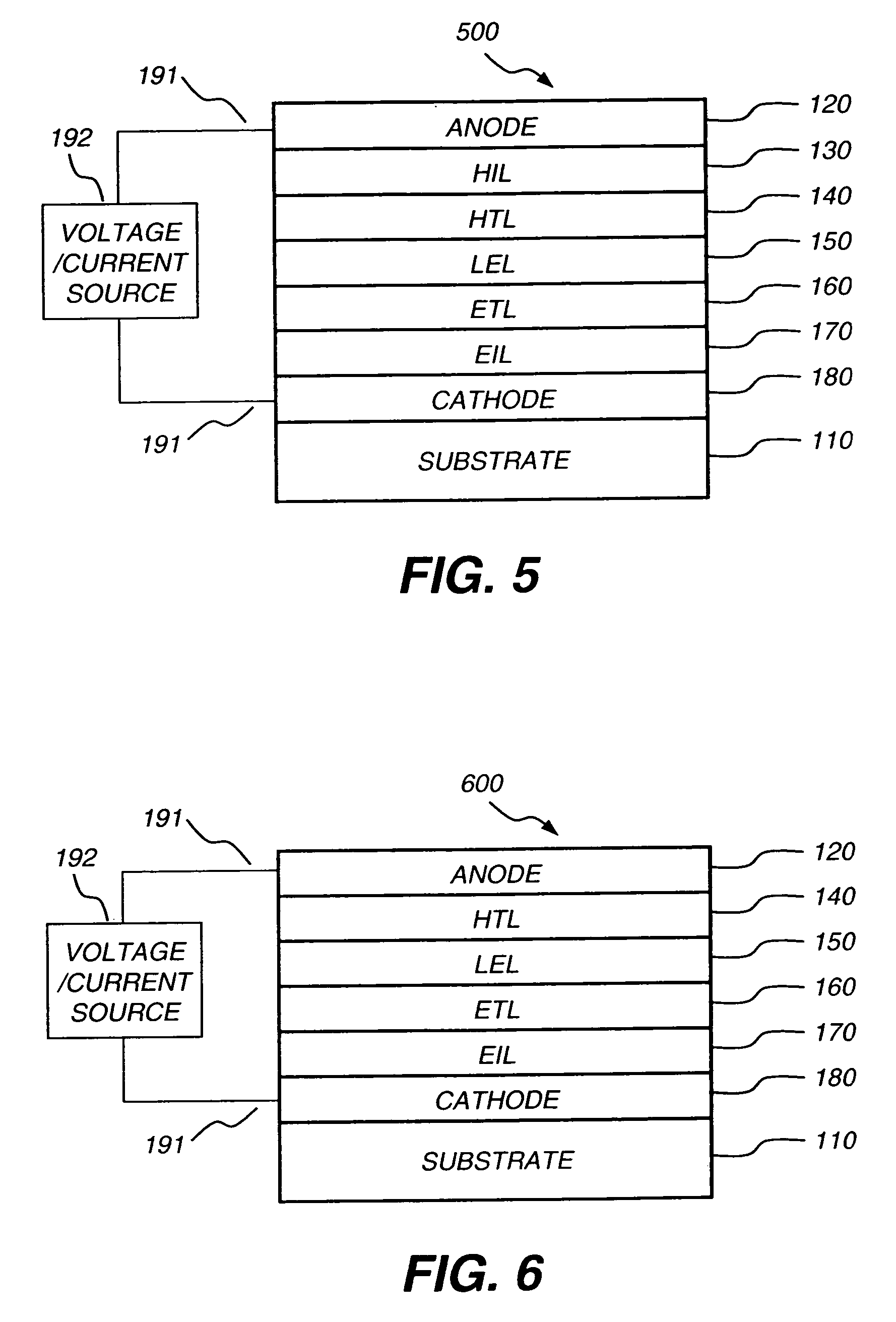OLED electron-transporting layer
a technology of electron transport layer and oled, which is applied in the direction of organic semiconductor devices, discharge tube luminescnet screens, natural mineral layered products, etc., can solve the problems of insufficient luminous efficiency of oled, inability to inject electrons from the cathode into the lel, and inability to achieve high luminous efficiency
- Summary
- Abstract
- Description
- Claims
- Application Information
AI Technical Summary
Benefits of technology
Problems solved by technology
Method used
Image
Examples
example 4 (
Inventive)
[0207] An OLED, in accordance with the present invention, was constructed as the same as that in Example 3, except that the 5 nm thick ETL (layer c) includes Material F-3, instead of Alq.
[0208] This OLED requires a drive voltage of about 4.8 V to pass 20 mA / cm2. Under this test condition, the device has a luminance of 587 cd / m2, and a luminous efficiency of about 2.9 cd / A. Its color coordinates are CIEx=0.135 and CIEy=0.169, and its emission peak is at 461 nm. Its T80(70° C.@20 mA / cm2) is about 220 hours. The EL performance data are summarized in Table 1, and its normalized luminance vs. operational time, tested at 70° C. and at 20 mA / cm2, is shown in FIG. 9.
[0209] In this device, both the host material in the LEL and the material in the ETL are anthracene derivatives. The reduction potential of TBADN and F-3 were measured as about −1.90 V and −1.78 V vs. SCE in the 1:1 MeCN / toluene organic solvent system, respectively. Therefore, the reduction potential of F-3 is about ...
example 5 (
Inventive)
[0210] Another OLED, in accordance with the present invention, was constructed as the same as that in Example 3, except that the 5 nm thick ETL (layer c) includes Material F-3 doped with about 1.2 vol % lithium, instead of Alq.
[0211] This OLED requires a drive voltage of about 4.2 V to pass 20 mA / cm2. Under this test condition, the device has a luminance of 577 cd / m2, and a luminous efficiency of about 2.9 cd / A. Its color coordinates are CIEx=0.136 and CIEy=0.158, and its emission peak is at 460 nm. Its T80(70° C.@20 mA / cm 2) is projected as about 300 hours. The EL performance data are summarized in Table 1, its normalized luminance vs. operational time, tested at 70° C. and at 20 mA / cm2, is shown in FIG. 9, and its normalized EL spectrum is shown in FIG. 10.
[0212] In this device, both the host material in the LEL and the material in the ETL are anthracene derivatives. With lithium being incorporated in the ETL, the drive voltage, the operational stability, and the color...
example 6 (
Inventive)
[0213] An OLED, in accordance with the present invention, was constructed in the same manner as Example 3, except that the 5 nm thick ETL (layer c) includes Material G-1, instead of Alq.
[0214] This OLED requires a drive voltage of about 4.9 V to pass 20 mA / cm2. Under this test condition, the device has a luminance of 570 cd / m2, and a luminous efficiency of about 2.9 cd / A. Its color coordinates are CIEx=0.135 and CIEy=0.162, and its emission peak is at 462 nm. Its T80(70° C@20 mA / cm 2) is greater than 220 hours. The EL performance data are summarized in Table 1.
[0215] In this device, both the host material in the LEL and the material in the ETL are anthracene derivatives. The reduction potential of TBADN and G-1 were measured as about −1.90 V and −1.86 V vs. SCE in the 1:1 MeCN / toluene organic solvent system, respectively. Therefore, the reduction potential of G-1 is about 0.04 V greater than that of TBADN. Moreover, the oxidation potential of TBADN and G-1 were measured ...
PUM
| Property | Measurement | Unit |
|---|---|---|
| work function | aaaaa | aaaaa |
| thickness | aaaaa | aaaaa |
| HOMO | aaaaa | aaaaa |
Abstract
Description
Claims
Application Information
 Login to View More
Login to View More - R&D
- Intellectual Property
- Life Sciences
- Materials
- Tech Scout
- Unparalleled Data Quality
- Higher Quality Content
- 60% Fewer Hallucinations
Browse by: Latest US Patents, China's latest patents, Technical Efficacy Thesaurus, Application Domain, Technology Topic, Popular Technical Reports.
© 2025 PatSnap. All rights reserved.Legal|Privacy policy|Modern Slavery Act Transparency Statement|Sitemap|About US| Contact US: help@patsnap.com



